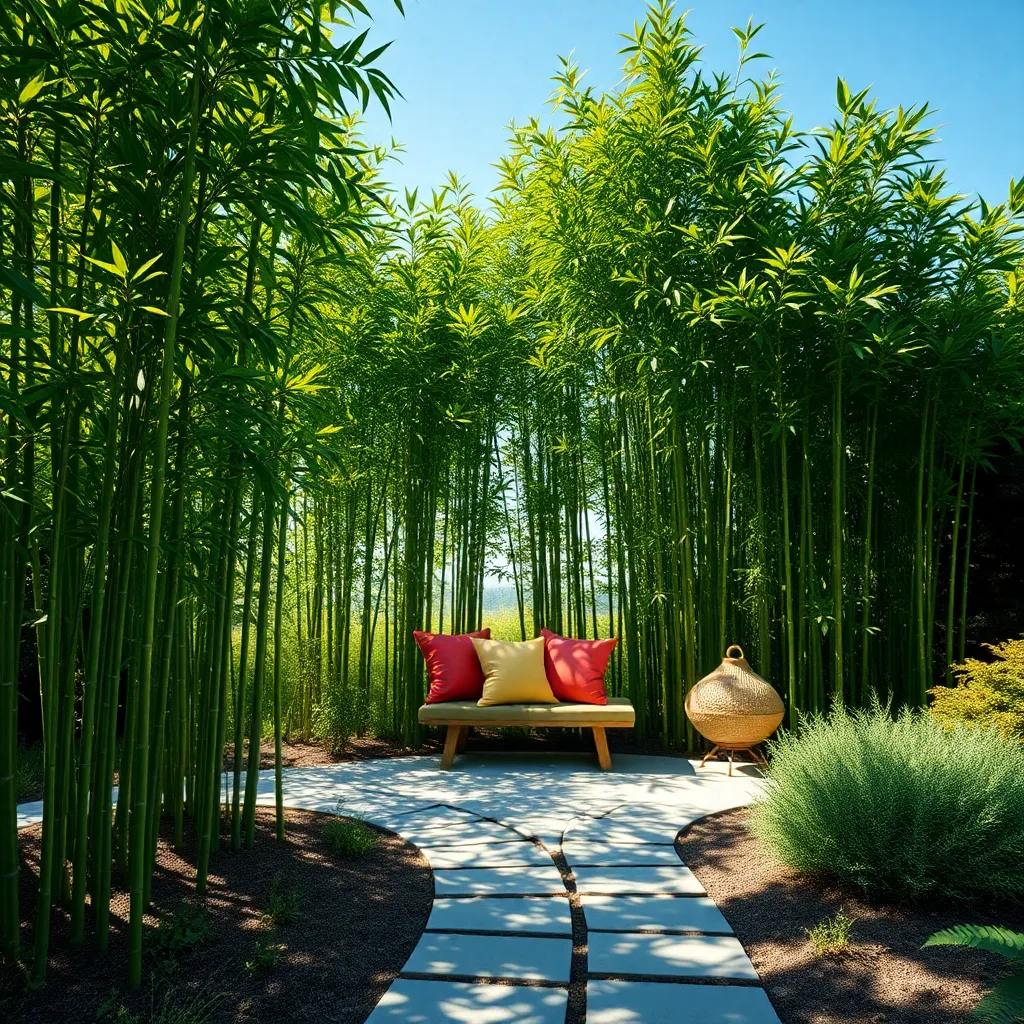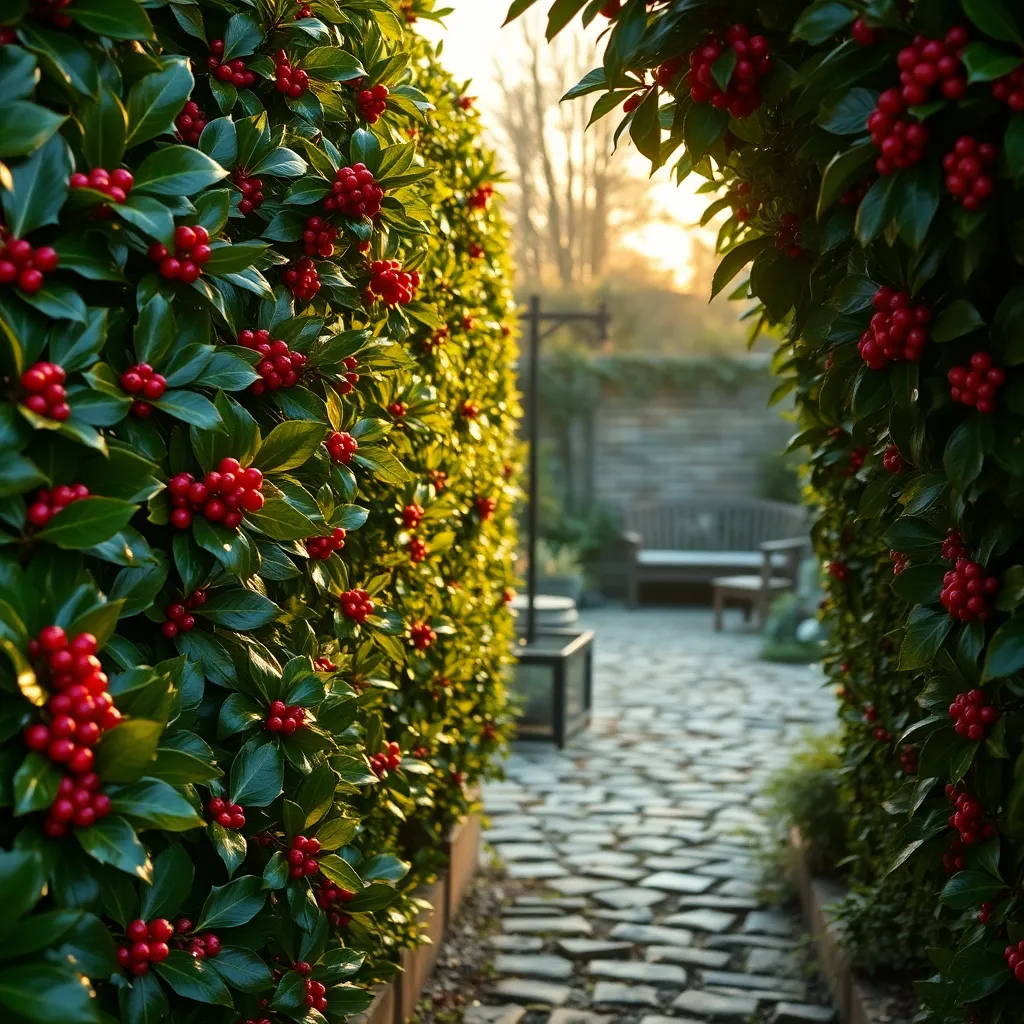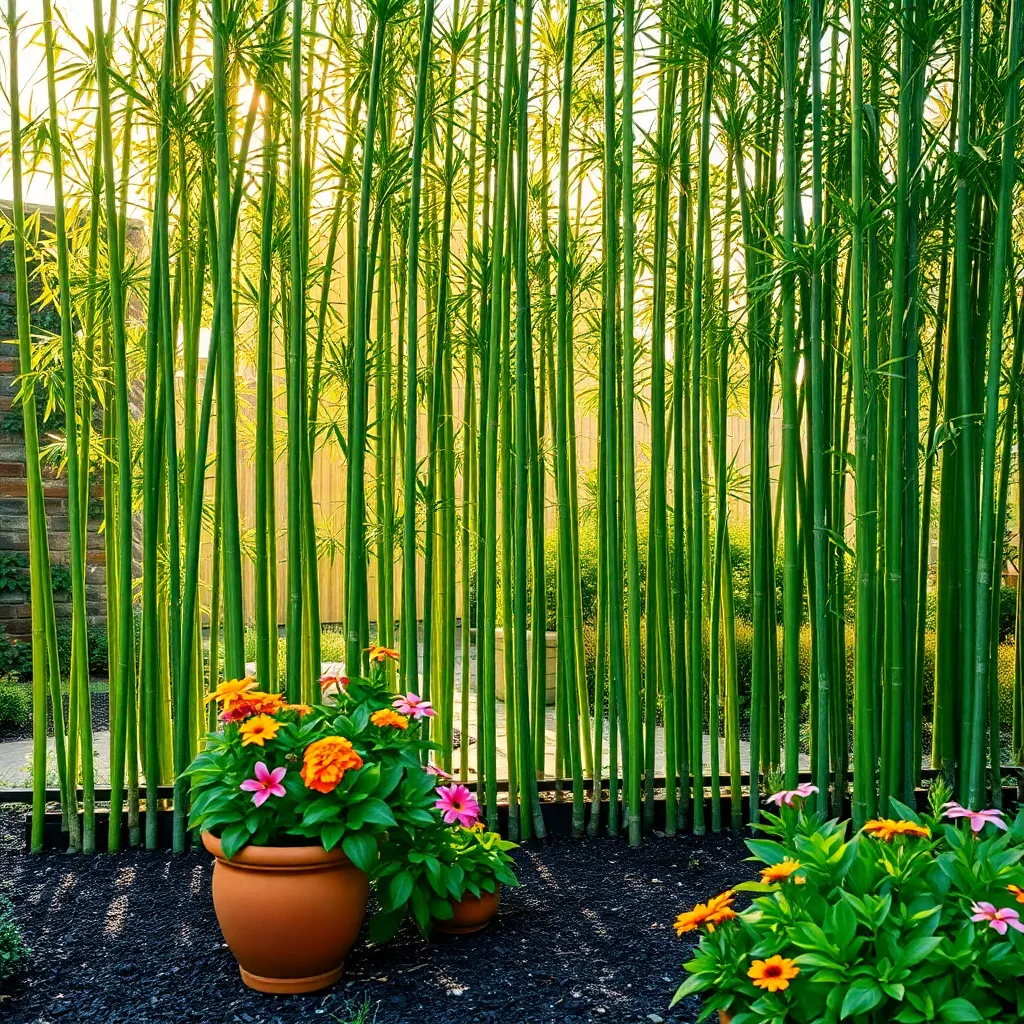Gardening is a journey where every leaf unfurls a new possibility, and for those seeking a lush oasis within their home, the right plants can transform any room into a serene sanctuary. Whether you’re a novice just starting to explore the world of houseplants or a seasoned green thumb looking to expand your indoor jungle, finding the perfect plants for privacy screens can make your indoor space both beautiful and functional.
Imagine creating a living tapestry of green that not only enhances your decor but also offers the practical benefit of privacy and noise reduction. This guide will introduce you to a curated list of indoor plants that excel as natural dividers, giving you the confidence to cultivate a peaceful retreat. With these carefully selected plants, you’ll discover the joy of watching your indoor garden flourish, knowing you’ve crafted a harmonious balance between aesthetics and practicality.
Bamboo (Fast-Growing and Dense)

Bamboo is an excellent choice for creating a natural privacy screen due to its fast growth and dense foliage. It can quickly transform your outdoor space into a secluded retreat, making it ideal for those seeking privacy.
This versatile plant thrives in a variety of soil types, but it prefers well-drained, fertile soil to reach its full potential. To ensure healthy growth, water bamboo regularly, especially during dry periods, keeping the soil consistently moist but not waterlogged.
For optimal growth, plant bamboo in a location that receives full to partial sunlight. If you’re in a colder climate, choose a hardy variety like Fargesia, which can withstand lower temperatures and provide a lush screen year-round.
To maintain your bamboo’s health and manage its spread, consider installing a root barrier around the planting area. This will prevent the bamboo from becoming invasive, allowing it to flourish as a beautiful and controlled privacy screen in your garden.
Thuja Green Giant (Evergreen and Low Maintenance)

The Thuja Green Giant is an excellent choice for privacy screens due to its fast growth and dense foliage. This evergreen is highly adaptable, thriving in a range of climates and soil types, making it a versatile choice for many gardeners.
For optimal growth, plant the Thuja Green Giant in well-draining soil with good exposure to sunlight. Water regularly during the first year to establish deep roots, then reduce frequency as the tree matures.
To maintain healthy growth and a lush appearance, consider applying a balanced fertilizer in the early spring. Pruning is generally minimal, but trimming once a year can help maintain the desired shape and prevent overgrowth.
Advanced gardeners might consider planting these trees in staggered rows to enhance thickness and visual interest. With proper care, the Thuja Green Giant can grow up to 3 feet per year, quickly providing an effective and attractive privacy solution.
Holly Bushes (Year-Round Privacy and Berry Appeal)

Holly bushes are a fantastic choice for creating year-round privacy screens with the added bonus of vibrant berries. These evergreen shrubs thrive in a range of climates, providing dense foliage that acts as a natural barrier.
To ensure optimal growth, plant holly bushes in well-drained, slightly acidic soil with a pH of 5.0 to 6.0. It’s important to water them regularly, especially during dry spells, ensuring the soil remains moist but not waterlogged.
For best results, position holly bushes in a spot where they receive full sun to partial shade. This sunlight exposure encourages healthy leaf development and enhances berry production, which is a delightful feature during the winter months.
Pruning holly bushes is essential to maintain their shape and promote bushier growth. Prune in late winter or early spring before new growth starts, and consider using the trimmings for decorative purposes or mulching.
Privet Hedge (Versatile and Easily Shaped)

Privet hedge is a popular choice for privacy screens due to its versatility and ease of shaping. Its dense foliage provides an excellent barrier, making it ideal for creating a secluded outdoor space.
To ensure optimal growth, plant privet hedges in well-draining soil enriched with organic compost. Water them regularly, especially during dry spells, to maintain lush foliage and healthy growth.
Pruning is a key aspect of maintaining a neat and attractive privet hedge. Trim the hedge at least twice a year; late spring and late summer are ideal times to encourage a dense, bushy appearance.
For those seeking a more advanced touch, consider shaping your privet hedge into unique forms. With regular trimming, you can experiment with different shapes, adding an artistic flair to your garden while maintaining privacy.
Clumping Bamboo (Non-Invasive and Elegant)

Clumping bamboo is an excellent choice for a privacy screen due to its non-invasive nature and elegant appearance. Unlike running bamboo, clumping varieties grow in a tight formation, making them manageable and perfect for confined spaces.
To successfully grow clumping bamboo, plant it in a location that receives full sun to partial shade. It thrives in well-draining, loamy soil enriched with organic matter, which helps retain moisture and provides essential nutrients.
Regular watering is crucial, especially during the first couple of years as the bamboo establishes itself. However, once established, clumping bamboo is relatively drought-tolerant, making it a low-maintenance option for busy gardeners.
For those seeking a lush, dense screen, consider varieties like Fargesia and Bambusa, which are known for their compact growth habits and cold hardiness. Pruning once a year in late winter or early spring helps maintain the desired height and encourages new growth, enhancing the plant’s fullness.
Conclusion: Growing Success with These Plants
In exploring the ‘Best Plants for Privacy Screens,’ we uncovered five key relationship concepts: the importance of creating personal space, fostering a nurturing environment, understanding the significance of natural barriers, cultivating growth and patience, and enhancing communication through shared projects. Each of these principles can transform not only your garden but also the landscape of your personal relationships.
As an actionable next step, consider choosing one plant from the article that resonates with you and involves your partner or family in planting it. This shared activity can serve as a metaphor for the relationship growth you seek, providing a tangible reminder of your commitment to nurturing your bonds.
Don’t forget to save or bookmark this article for future reference. It’s packed with tips that can be revisited whenever you’re looking to enhance your living space and relationships simultaneously.
Looking ahead, remember that successful relationships, like gardens, require ongoing care and attention. By integrating these concepts into your life, you empower yourself to cultivate deeper connections and a more harmonious home environment. Embrace this opportunity to grow together and transform your space into a sanctuary of love and privacy.
